
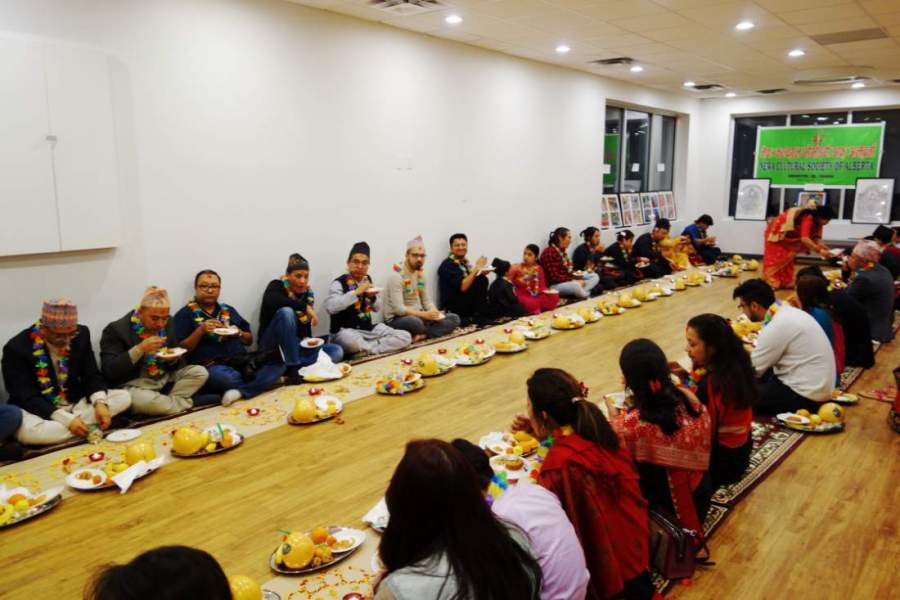
The Nepalese community in Edmonton, Canada observed Mha Puja (The Worship of Body Persona) and New Year (Nepal Era 1144) amidst a special cultural event at Lansdowne Community Hall in Edmonton, Canada on Saturday November 18, 2023. The cultural event was hosted by the Newa Cultural Society of Alberta (NCSA), a local organization established under the Societies Act of Government of Alberta to practice, promote and preserve Newa culture and traditions in Edmonton, Canada.
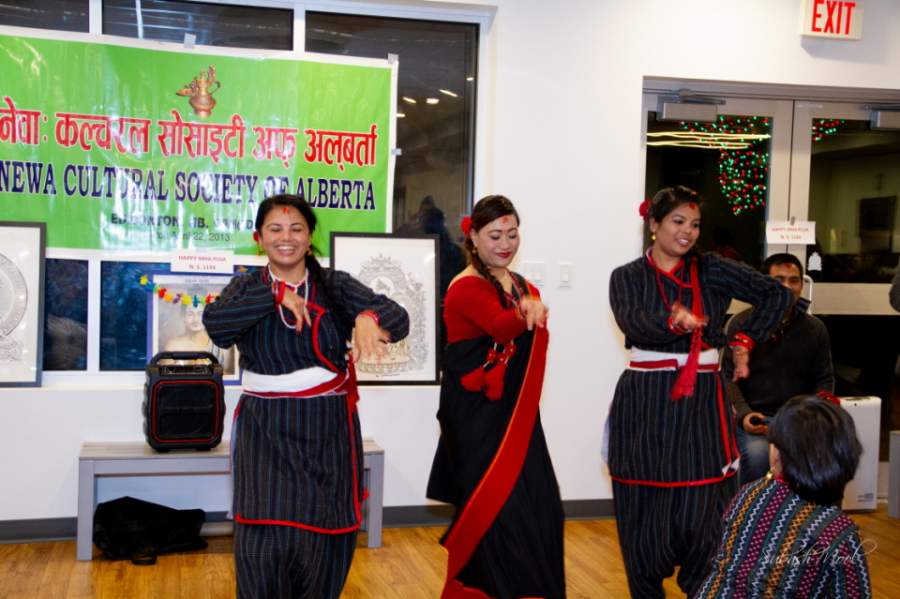
The cultural event was inaugurated by Dr. Hemanta Joshi, President of NCSA, by lighting the Twadewas, traditional Nepalese artistic oil lamps. As part of the cultural event, Dr. Joshi also garlanded on the portrait of Sankhadhar Sakhwal, the founding father of Nepal Era calendar.
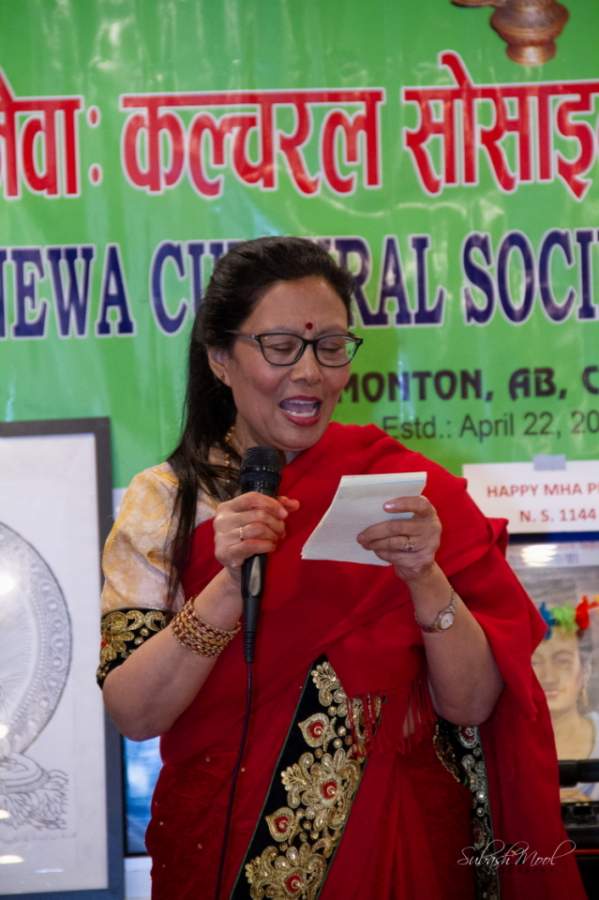
In the inaugural session, Dr. Hemanta Joshi, President of NCSA, extended his Mha Puja and New Year (Nepal Era 1144) Greetings to all the participants. Dr. Joshi briefly highlighted on the activities of NCSA and significance of Mha Puja. According to Dr. Joshi, NCSA is the first organization to introduce Lakhey dance, Bhairab dance, Kumari dance, and Dhimay dance in Canada. According to Dr. Joshi, Mha Puja is a unique ancient cultural tradition to purify and empower human soul for meaningful and peaceful living. Dr. Joshi also briefly spoke about Nepal Era calendar established by Shankhadhar Sakhwal, a local businessman, on the auspicious day of Mha Puja in 879 A.D. According to Dr. Joshi, Nepal Era calendar is a unique calendar in the world established in the name of the country.
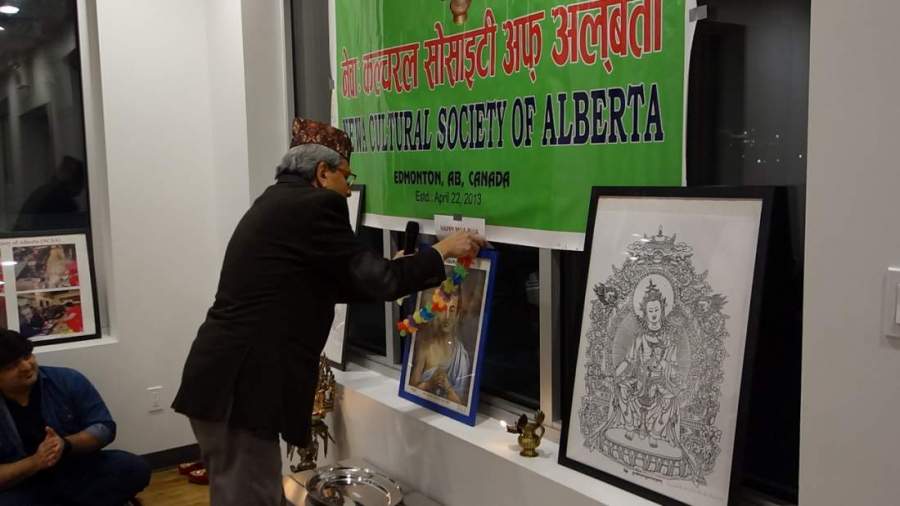
After the inaugural session, the Mha Puja ceremony took place in a traditional way. All the participants sat cross-legged in front of their colorful Mandalas drawn to represent inner soul. A group of Thankalinakins (senior ladies) from the community facilitated the Mha Puja ceremony. They offered Dhau Shinah [a dab of colored paste made from yogurt, whole grain rice and vermillion powder] to the participants on their forehead. All the participants in the ceremony worshiped their soul offering flower, whole rice grains, puffed rice, and vermillion powder in their Mandalas. As part of the ritual, all the participants received an auspicious tray containing garlands, Kokha (sacred threads to wear around the neck to protect from evil spirit), seasonal fruits, ethnic sweets, Masala Po (a package of dry nuts, spices and candies), Khosin (whole walnuts), and Syangli (whole filbert nuts) from the Thakalinakin as blessing for fruitful and resourceful life. A burning tealight [substitute for Khelu Ita (wicked oil lamp)] as a symbol of brightness of the soul was also handed to the participants in the Mha Puja ceremony.

During the Mha Puja ceremony, all the participants received auspicious Khen Sagan [a ritual food comprised of five key elements of the universe: deep-fried egg representing sky, Woo (deep fried pancake made from black lentil) representing air, Nya (small fried whole fish) representing water, Laa (steamed and fried pieces of meat) representing earth, and Khaye [substitute for Aela (liquor) representing fire] from the Thakalinakin as blessings for good luck, bright future and prosperity through the New Year (Nepal Era 1144). The Mha Puja ceremony was concluded by dragging a Tufi (broom) over the Mandalas by one of the helpers to the Thakalinakin.
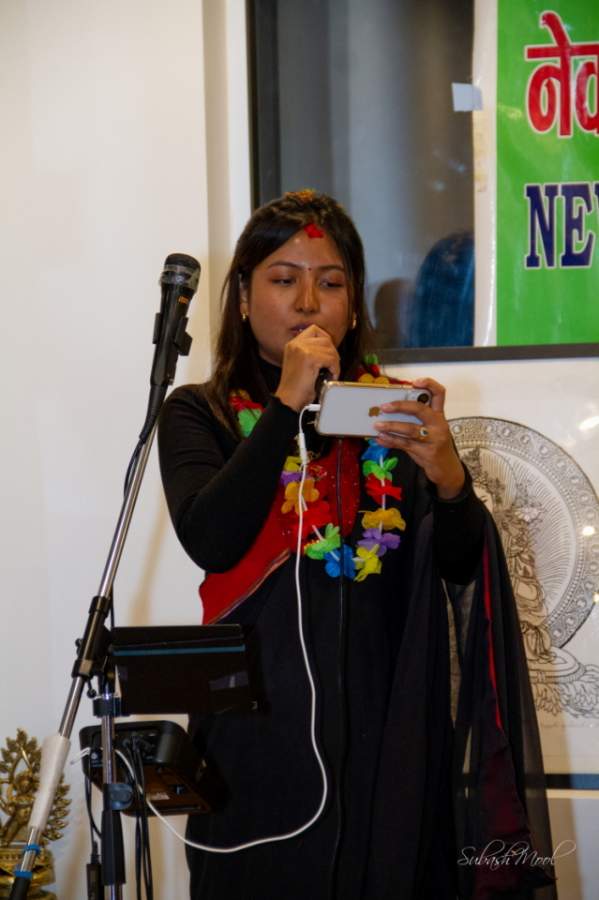
After the Mha Puja ceremony, participants were entertained with vivid cultural programs (ethnic songs, dances, Saragi Dhoon as well as cultural quiz related to Mha Puja) to celebrate the New Year (Nepal Era 1144). In the cultural event, an ethnic dinner was also served to all the participants. At the end of the cultural event, Mr. Birendra Kayastha, Secretary of the NCSA, thanked all the volunteers, participants and the sponsor for their support in organizing the cultural event.

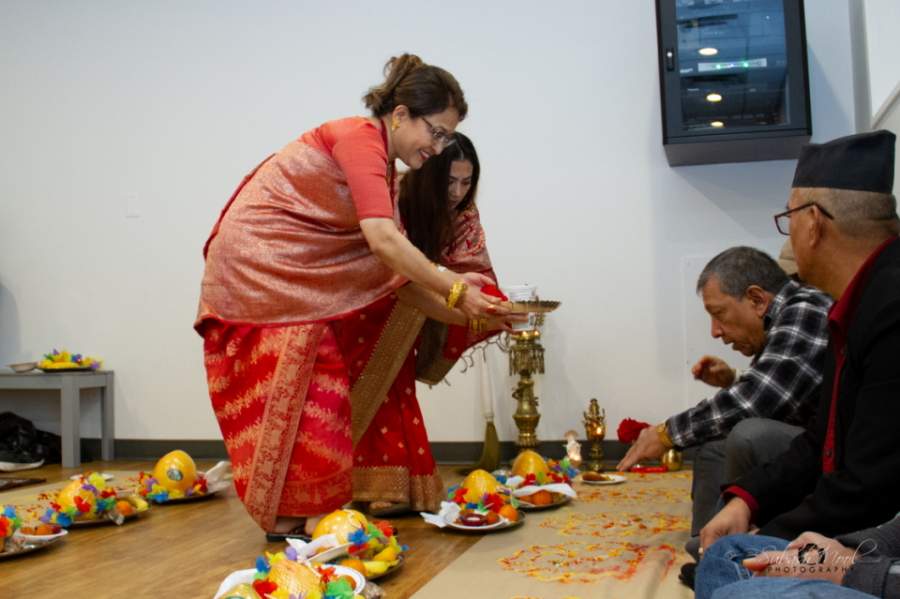
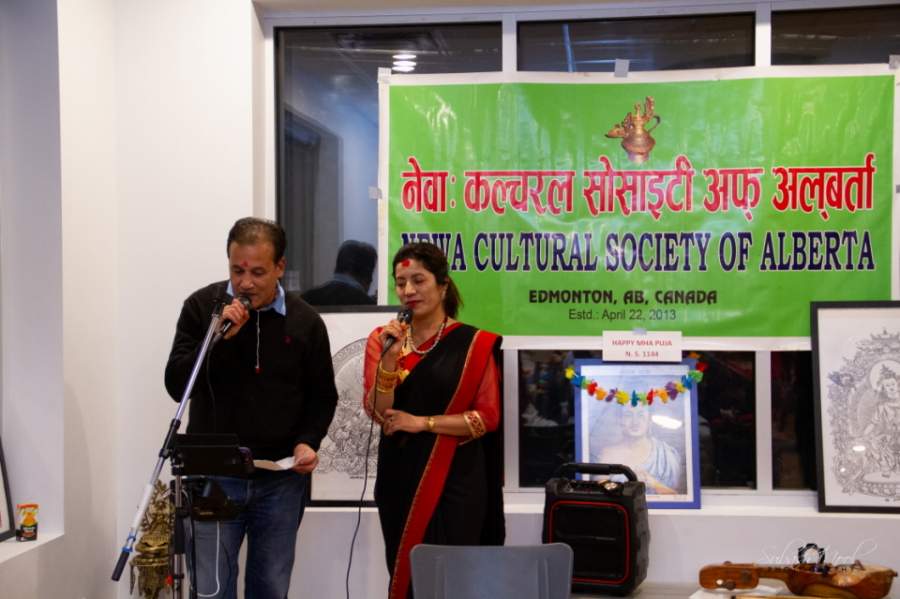
Comment